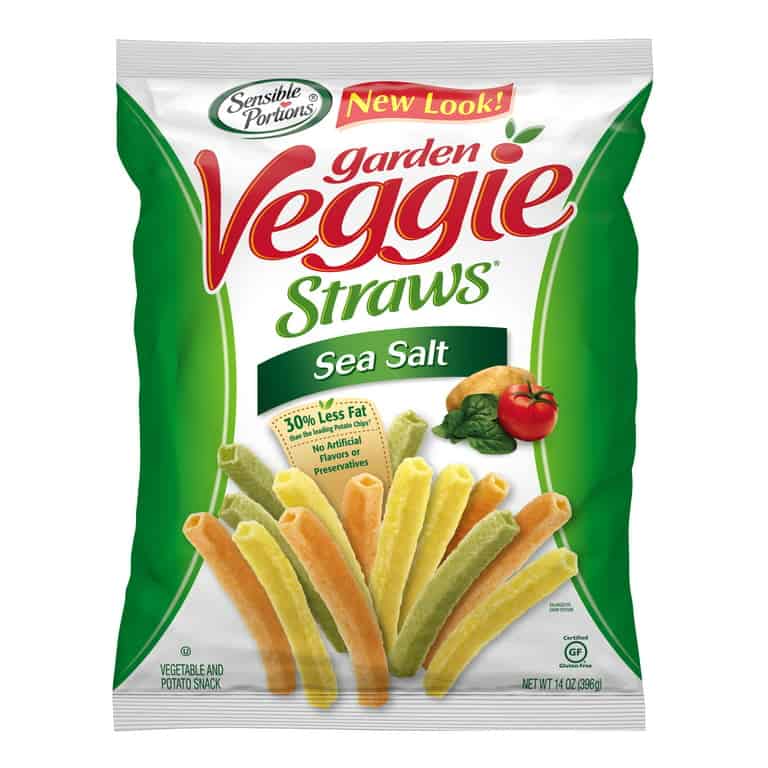The Ultimate Guide to Veggie Straws for Parents: What You Need to Know
Veggie straws are becoming a beloved snack among kids and adults alike, but as a parent, it’s essential to understand what they are, how they can fit into your child’s diet, and what nutritional value they may (or may not) provide. In this guide, we’re going to deep-dive into the vibrant world of veggie straws and provide you with all the information you need to make informed decisions for your little munchers.
What Are Veggie Straws?
Veggie straws are a popular snack food that boasts the inclusion of vegetables in its ingredients. They come in various colors and flavors, and their light, crispy texture makes them an attractive alternative to traditional potato chips or crackers. As a parent, you’re always seeking out snack options that are not only convenient but also offer some nutritional value – and veggie straws often catch the eye in the snack aisle.
But here’s the crunch – while they’re marketed to imply that they’re packed with veggies, the reality may be a bit different. Let’s break down what these colorful straws are made of and how they stack up nutrition-wise.
Nutritional Profile of Veggie Straws
The term “veggie” may evoke images of leafy greens and freshly harvested carrots, but when it comes to veggie straws, the picture is somewhat less garden-fresh. Typically, veggie straws are made from potato flour or starch, with added vegetable purees for coloring (like tomato or spinach) and seasoning for taste. In terms of nutritional value, while they do contain a small serving of vegetables, they may not contribute significantly to your child’s daily vegetable intake.
Let’s compare the nutritional content in a standard serving of veggie straws to fresh vegetables:
- Calories: Similar to other snack foods, veggie straws are calorically dense. A serving can range between 130-160 calories, which can add up quickly if snacking becomes frequent.
- Fat: The oil used for frying or baking these snacks can contribute to the total fat content. It’s vital to check whether the straws contain trans fats or saturated fats, which are less desirable in a health-conscious diet.
- Sodium: Veggie straws often have a considerable amount of sodium, which can be an area of concern, especially for children’s developing taste preferences and dietary needs.
- Fiber: Despite being made with vegetables, many veggie straws are low in dietary fiber compared to whole veggies, which is a crucial nutrient for kids’ digestive health.
- Vitamins and Minerals: Fresh vegetables are rich in essential vitamins and minerals like Vitamin A, Vitamin C, potassium, and iron, whereas veggie straws generally contain lower levels of these important nutrients.
In essence, while veggie straws might have a slight nutritional edge over some snacks, they are not a replacement for whole, fresh vegetables. They can be included in a balanced diet as an occasional treat, but should not be relied upon for fulfilling your child’s daily vegetable servings.
Incorporating Veggie Straws into a Balanced Diet
Knowing how to balance the inclusion of snacks like veggie straws in your child’s diet is key. Yes, they may be convenient and tasty, but they should be considered a treat rather than a staple. Here’s how to keep things in balance:
- Portion Control: Stick to the serving size on the package to prevent overeating. It’s easy to keep reaching into the bag, but a small bowl can help keep portions in check.
- Meal Planning: Plan your child’s meals to ensure they’re getting plenty of whole vegetables throughout the day. Fresh, frozen, or canned (without added sugars or salts) can all be part of a nutritious diet.
- Educating Kids: Teach your children about the benefits of whole vegetables over processed snacks. Hands-on activities like gardening or cooking can help them appreciate where real food comes from.
”

Five Key Considerations for Parents Preparing Veggie Straws
When introducing veggie straws into your child’s snack time, it’s important to stay informed. Below are five things every parent should know:
- Check the Ingredients: Not all veggie straws are created equal. Carefully read the ingredients list to ensure that it doesn’t contain artificial flavors, colors, or preservatives that you may want to avoid. Look for options with recognizable, whole-food ingredients.
- Understand the Serving Size: The nutritional label on the package will tell you the recommended serving size. Keep in mind that it’s easy to eat more than the suggested amount, which could lead to an intake of excess calories and sodium.
- Balance with Real Vegetables: Use veggie straws as an opportunity to discuss the importance of real vegetables. Pairing the straws with a side of fresh-cut veggies or a vegetable-heavy dip like hummus can reinforce healthy eating habits.
- Consider Homemade Alternatives: If you’re concerned about the processed nature of store-bought veggie straws, consider making your own at home. This allows you to control the ingredients and can be a fun cooking activity for you and your children.
- Mindful Snacking: Encourage mindful eating by having kids sit down during snack time rather than munching on the go. This helps them pay attention to their hunger and fullness cues and enjoy their food more thoroughly.
Fun and Nutritious Alternatives to Veggie Straws
If you’re looking for alternatives to veggie straws that are still kid-friendly and nutritious, there are plenty of options:
- Vegetable Chips: Slice up some beets, carrots, or sweet potatoes, lightly coat them with olive oil, and bake them in the oven for a crispy treat that’s full of nutrients.
- Fruit & Veggie Muffins: Incorporate vegetables into homemade muffins for a sneaky and delicious way to boost your child’s veggie intake.
- Popcorn: A whole-grain alternative to veggie straws, popcorn can be a fiber-rich snack. Just go easy on the salt and butter!
- Nut & Seed Mix: Create your own mix of nuts and seeds for a snack that’s rich in protein and healthy fats to keep your little ones energized.
- Yogurt and Fruit: For a sweet change, offer Greek yogurt with fresh fruit. It’s a great way to get calcium and vitamins into their diet.
Always aim for variety to keep snack time interesting and nutritionally balanced. And remember – making these snacks together with your kiddos can be an opportunity for learning about healthy food choices and developing culinary skills.
Tasty Veggie Straw Recipes and Pairings
While enjoying veggie straws straight from the bag can be satisfying, they can also be part of creative recipes and pairings:
- “Fries” with a Twist: Treat veggie straws like French fries and pair them with healthier versions of dipping sauces, like Greek yogurt ketchup or avocado ranch dip.
- Crunchy Salad Topping: Use crushed veggie straws as a fun, crunchy topping on a fresh salad instead of croutons.
- Sandwich Side: Rather than chips, offer a handful of veggie straws as a side to a veggie-packed sandwich or wrap.
- Fiesta Bowl: Assemble a Mexican-inspired bowl with rice, beans, fresh veggies, cheese, and top it with a handful of spicy veggie straws for an extra crunch.
Being playful with how you serve snacks can make them more enticing while still being conscientious about nutrition.




